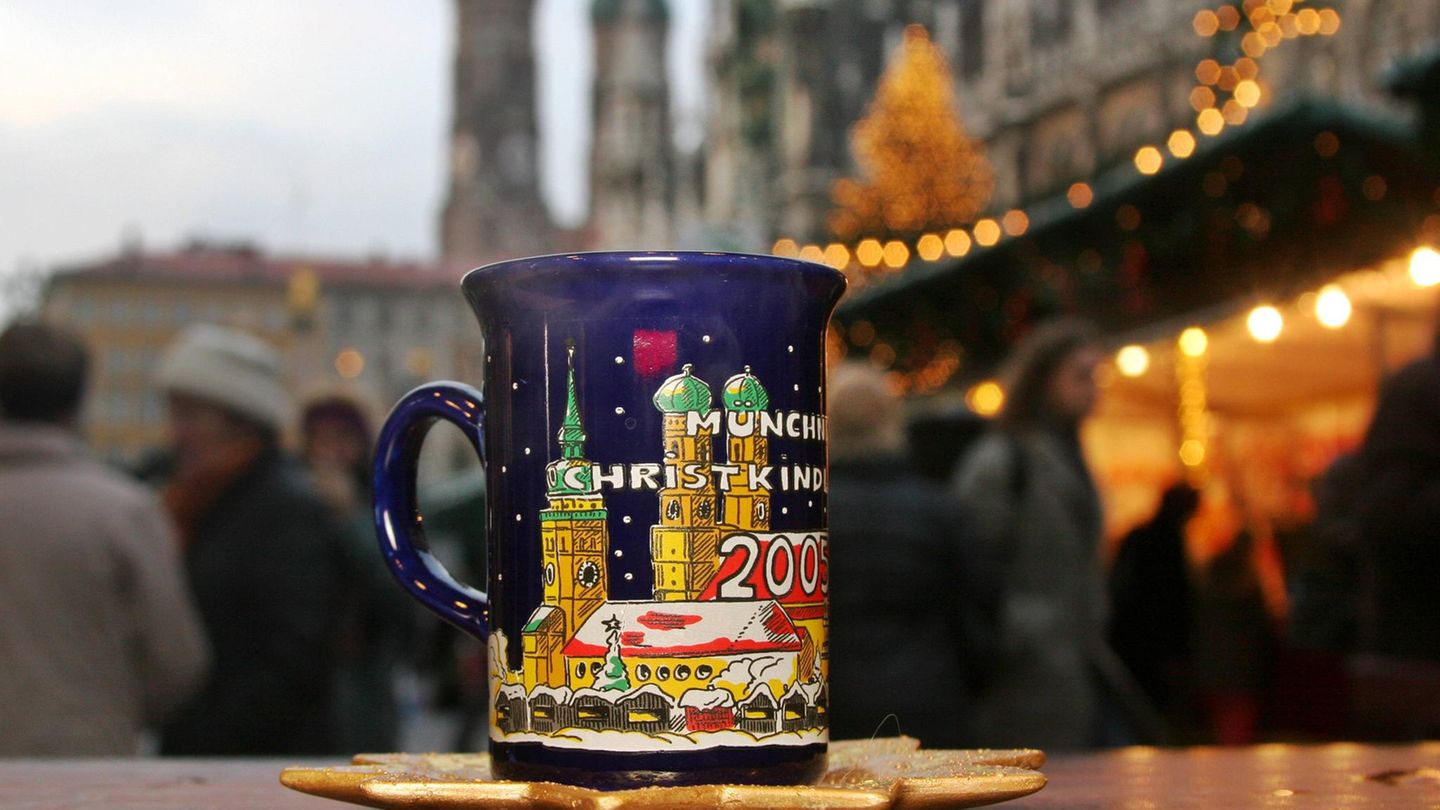Mulled wine report
False myths, secret recipes and the big rip-off
Copy the current link
50 million liters per year – the Germans love their mulled wine. We don’t seem to care what’s in the cup. How the industry makes money from it.
The Christmas market at Hamburg City Hall smells bad. After a mix of austere cheese, big city and mulled wine, visitors line up, jostle and willingly pay the price of a fine wine: 22.50 euros per liter.
“We serve organic mulled wine from a Palatinate winemaker,” promises operator Roncalli. Passing a ten euro note over the counter for the cup plus the deposit still hurts.
The Germans seem to love this buyer’s remorse: we drink around 50 million liters of mulled wine every year. Rising prices and unknown quality are often irrelevant. Producers and sellers benefit from this.
Cheap wine as a basis
Those who make mulled wine usually proceed like this: In the spring, they buy red or white wine seasonally cheaply in southern European countries. The most important country for German producers is Spain. From there, bulk wine – wine that is not marketed in bottles – can be imported particularly cheaply. According to the market analysis company Catella Research, you pay 40 cents or less per liter.
This cheap wine is then “refined” in just one step and at low cost: granulated sugar, cinnamon and cloves are added. Together, the ingredients cost 1.20 euros per liter, according to the experts at Catella Research. So a total of 1.60 euros for something that will later be sold for over 20 euros.
The costs for production, employees and the profit of the sellers are still missing. But even with more expensive German wine as a basis, the final price for a cup of mulled wine doesn’t really explain, writes Catella Research in its annual report “Market Tracker Christmas” for 2023.
One aspect makes the industry in this country particularly inscrutable: there is almost a monopoly on the German mulled wine market.
Monopoly on mulled wine
Anyone who drinks mulled wine at a German Christmas market is very likely to have a mixture in their cup that comes from a factory in Nuremberg: Gerstacker Weinkellerei Likörfabrik GmbH, a Franconian family business that dominates the world market.
The company does not provide any current business figures. However, Gerstacker puts its own market share in the German mulled wine market at 80 percent. Industry experts estimate the proportion to be higher, in German retail even as high as 98 percent.
The recipe for Gerstacker mulled wine is just as secret as the numbers. What is clear: Gerstacker dominates the German market.
With such dominance, pricing is easy: a liter bottle of the well-known and best-selling Nuremberg Christkindles market mulled wine costs an impressive 4.50 euros in the supermarket. At the Christmas market you only get a small cup full – possibly with the same contents.
Recognize good mulled wine
Sometimes not only is the price massively increased, but the quality is also reduced by selling mulled wine spiced, sugar-added or stretched. Yvonne Heistermann, President of the Sommelier Union Germany, knows how to distinguish good mulled wine from bad.
“A good mulled wine should really taste like wine,” says the expert. “It shouldn’t have a biting or fizzy, i.e. alcoholic, taste, but you should taste the wine aroma through, complemented by aromas of Christmas spices and with a touch of sweetness.”
If a mulled wine is very sweet, that should make you suspicious. “You can hide a lot with sweetness.” The same applies if the mulled wine is over-spiced, for example if it tastes extremely like cloves. A good mulled wine doesn’t need a lot of spices, says Heistermann. “That’s why the rule of thumb applies to me: the ‘winier’ a mulled wine is, the better.”
with dpa
Source: Stern





